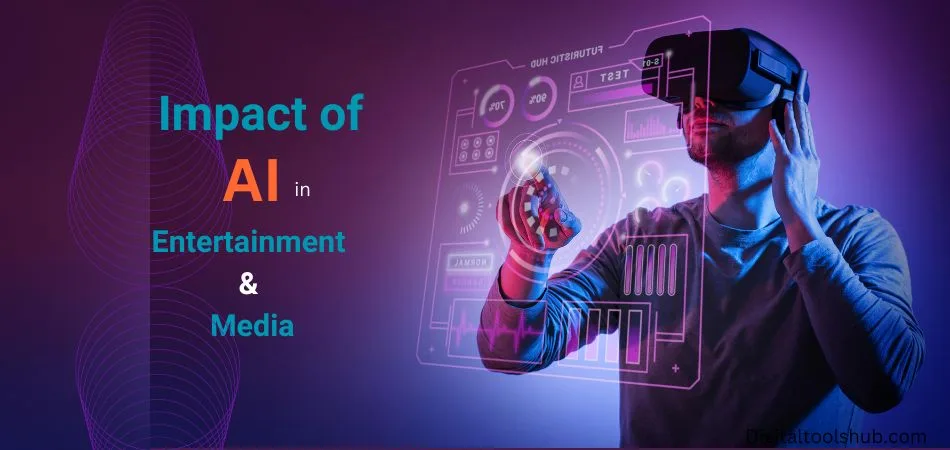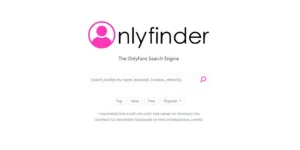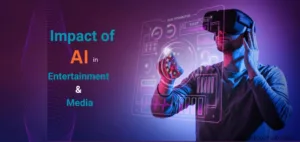Impact of Al in Entertainment and Media

Introduction
This article presents a comprehensive analysis of the impact of artificial intelligence (Al) on the Entertainment and media industries, discussing their potential benefits, challenges, and ethical considerations.
We explore Al-driven advancements in content creation, audience engagement, Advertising, personalization, analytics, virtual reality, and digital twinning, incorporating pertinent facts, quotes, and statistics. We also emphasize the importance of addressing ethical concerns. Such as data privacy, security, and algorithmic bias, to ensure the responsible and equitable use of Al in entertainment and media.
Rapid advancements in artificial intelligence (AI) technologies are transforming the entertainment and media industries, presenting new opportunities to enhance content creation, audience engagement, and monetization strategies. In this article, we discuss the impact of Al on various aspects of entertainment and media, exploring their potential benefits, challenges, and ethical considerations.
Table of Contents
Impact of Al in Content Creation
Generative Al has the potential to revolutionize content creation by automating the generation of new stories, scripts, music, and artwork. Al-powered tools can analyze existing content to identify patterns and generate new, original content that appeals to audiences.
According to a study by Accenture, 68% of media executives believe, Al will have a significant impact on content creation within the next two years. This can help creators save time and resources while maintaining quality and originality. One notable example is the Al-generated script for the short film “Sunspring” in 2016, showcasing the early potential of Al in scriptwriting.
Impact of Al in Audience Engagement
Al can help enhance audience engagement by analyzing user behavior and preferences, allowing for the development of tailored content and experiences. Netflix, for example, uses Al-powered recommendation algorithms to improve content discovery, leading to increased user satisfaction and retention. According to Netflix, its recommendation system saves the company an estimated $1 billion per year by reducing customer churn.
Additionally, Al-driven chatbots can engage with users, answering questions and providing personalized recommendations. Gartner predicts that by 2022, 70% of customer interactions will involve Al-powered chatbots.
Impact of Al in Advertising
Al-driven advertising can help media companies and advertisers optimize campaigns by analyzing user behavior, preferences, and demographic data. Al-powered algorithms can identify the most effective advertising strategies, enabling more targeted and efficient ad placement.
According to a study by the Interactive Advertising Bureau (IAB), 80% of advertisers are expected to increase their use of Al-driven advertising in the next two years, leading to improved return on investment for advertisers and increased revenue for media companies.
Impact of Al in Personalization
Al can help personalize the entertainment and media experience by analyzing user data to create tailored content recommendations and user interfaces. According to a survey by McKinsey, 35% of Amazon’s sales and 75% of Netflix views are driven by personalized recommendations Al- powered tools can generate personalized playlists, movie recommendations, and news feeds, leading to improved user satisfaction and engagement.
Impact of Al in Analytics
Al-powered analytics can help entertainment and media companies make data-driven decisions by analyzing user and content performance data. The insights gained from Al-driven analytics can inform content creation, marketing. And distribution strategies, leading to improved user engagement and revenue generation.
A report by Markets and Markets predicts that the global media analytics market will grow at a CAGR of 21.2% from 2020 to 2025, reaching $6.1 billion by 2025.
Impact of Al in Virtual Reality
Al-driven virtual reality (VR) experiences can revolutionize the entertainment and media industries by creating immersive, interactive, and personalized experiences. Al-powered algorithms can generate. Realistic virtual environments and characters, allowing users to engage in more immersive and interactive experiences.
According to a report by Grand View Research, the global virtual reality market is expected to grow at a CAGR of 18.0% from 2021 to 2028, reaching $62.1 billion by 2028.
Digital Twinning of Celebrities
Digital twinning, the process of creating digital replicas of physical entities, can have a significant impact on the entertainment and media industries particularly in the context of celebrities. By creating digital twins of celebrities, their reach can be expanded, and new revenue opportunities can be explored. As these digital replicas can engage with fans, participate in virtual events, and even create original content.
Increasing Reach and Fan Engagement
Al-powered digital twins can help celebrities increase their reach by engaging with fans on various digital platforms, such as social media, gaming, and virtual events. These digital replicas can interact with fans in real-time, answer questions, and provide personalized experiences, leading to increased fan engagement and loyalty.
For instance, a virtual concert by digital twin Travis Scott in Fortnite drew over 12.3 million concurrent viewers, showcasing the potential of digital twinning to reach massive audiences.
Virtual Events and Performances
Digital twining can enable celebrities to participate in virtual events, concerts, and performances without the need for physical presence. Al-driven holograms or virtual reality avatars can perform live or pre-recorded shows. Allowing celebrities to reach global audiences simultaneously. These virtual events can create new revenue opportunities through ticket sales, merchandise, and advertising.
Original Content Creation
Al-powered digital twins can generate original content, such as music, videos, or social media posts, by analyzing the celebrity’s existing content and style. This can help celebrities maintain a consistent presence on various digital platforms, leading to increased audience engagement and revenue generation opportunities.
For example, digital twin influencers like Lil Miquela have gained millions of followers on social media platforms, generating advertising revenue and brand partnerships.
Revenue Opportunities
Creating Digital Twins of celebrities can unlock new revenue streams, such as licensing the digital replicas for use in movies, advertisements, and video games. Additionally, virtual merchandise, such as digital clothing, accessories, and collectibles, can be sold to fans, leading to increased revenue generation opportunities.
According to a report by Digi-Capital, the global virtual goods market is expected to reach $190 billion by 2025.
Roadmap to Real-Time Photorealistic Movie Creation
The following roadmap outlines the progression of current technology towards real-time photorealistic movie creation using Al:
Phase 1 – Advanced Text to-Image Generation Developing Al algorithms capable of generating detailed and high-resolution images from textual descriptions, building on existing models like DALL-E, Midjourney and several others.
Phase 2 – Real-time Character and Scene Animation Creating Al-driven tools that allow for real-time animation of characters and scenes, leveraging technologies like motion capture and procedural animation.
Phase 3 – Al-Generated Narratives and Dialogues – Developing advanced Al models that can create compelling narratives and dialogues based on user input or predefined stories. Structures, building on existing models like GPT-4.
Phase 4 – Photorealistic Rendering and Visual Effects Enhancing Al-driven rendering and visual effects capabilities to achieve photorealistic quality in real-time, leveraging techniques like ray tracing and deep learning-based image synthesis.
Phase 5 – Al-Powered Film Direction and Editing Developing Al algorithms that can dynamically direct and edit movies in real-time, taking into account factors like pacing, shot composition, and continuity, to create a seamless and engaging viewing experience.
Phase 6 – Real-time Voice Synthesis and Audio Design-Creating Al-driven solutions for real-time voice synthesis and audio design, enabling Al-generated characters to deliver realistic and emotionally nuanced performances, while also generating sound effects and musical scores that enhance the overall film experience.
Phase 7 – Integration and Optimization Integrating and optimizing all Al-driven components to enable real-time, photorealistic movie creation that is accessible to both professional filmmakers and general users, fostering a new era of democratized content creation and consumption.
Ethical Considerations
Addressing ethical concerns, such as data privacy, security, and algorithmic bias, is crucial for the responsible and equitable use of Al in entertainment and the media. Industry stakeholders must collaborate to develop and implement ethical guidelines and regulations that ensure the responsible use of AI-driven technologies.
As the EU’s General Data Protection Regulation (GDPR) highlights, ensuring data privacy and security is paramount for building trust with users and maintaining compliance with regulations.
Conclusion:
Artificial intelligence holds significant promise for the future of entertainment and media, offering innovative solutions to enhance content creation, audience engagement, advertising, Personalization, analytics, and virtual reality experiences. By addressing the challenges and ethical considerations associated with Al adoption, and by implementing the recommendations outlined in this whitepaper, the entertainment and media industries can fully harness the potential of Al to revolutionize the way content is created, consumed, and monetized.




